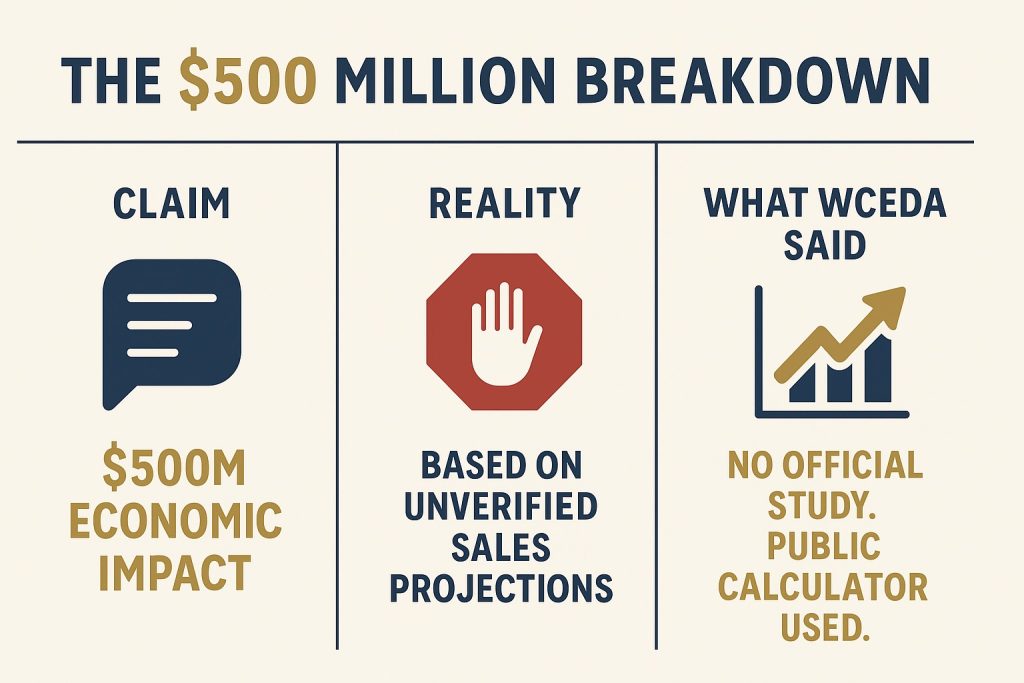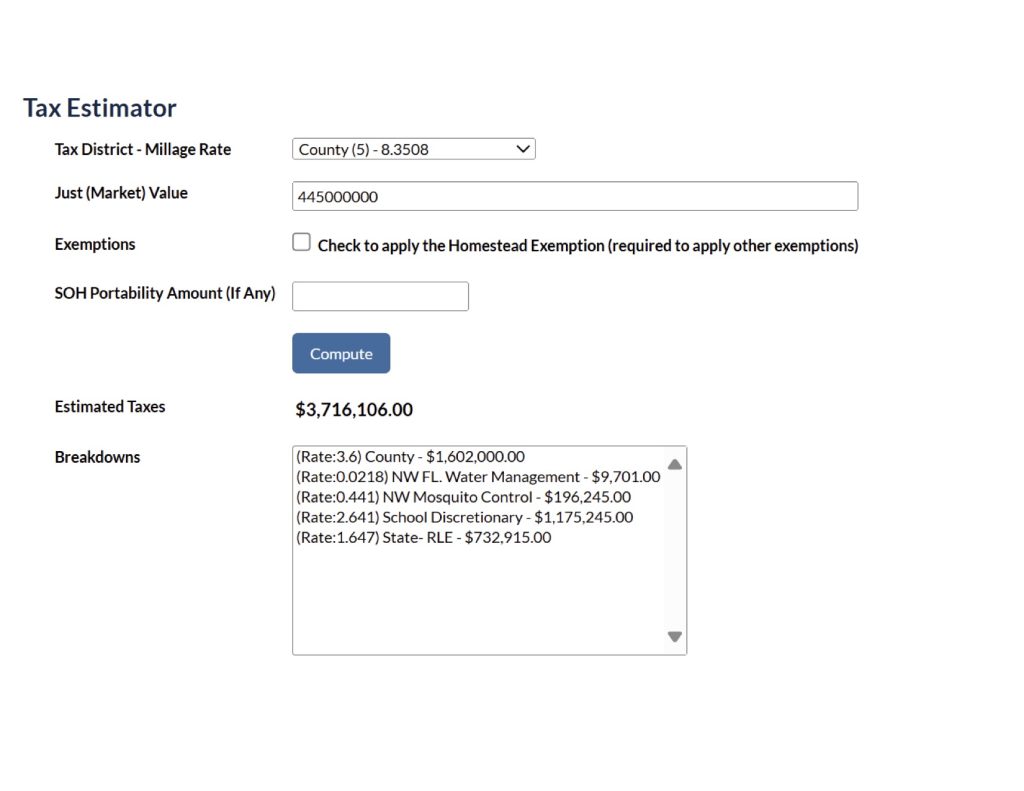Where Did the $500 Million Claim Come From?
What the Public Needs to Know About ECMC’s Economic Promise
The developers of the Emerald Coast Motor Club (ECMC) have publicly promoted a figure of $500 million in economic benefit to Walton County. News reports indicated that the Walton County Economic Development Alliance (WCEDA) assisted the developers in arriving at this number. To better understand the basis of this claim, we reached out directly to WCEDA—and their response may surprise you.
1. What the Developer Is Claiming
According to public promotions, the ECMC racetrack developers are asserting that the project will result in an economic impact of over $500 million for Walton County. They imply that this figure is backed by official analysis and reflects long-term, large-scale investment returns.
But there’s a problem: to date, there has been no actual economic impact study released to the public that supports this claim.
2. What the Public Deserves to Know
In an effort to verify the source of this $500 million number, we reached out to Uriah Matthews, Executive Director of the Walton County Economic Development Alliance (WCEDA). His response was clear and direct:
“The analysis was just input data using the expected value outcomes based on the developer’s sales targets. Then the data was inserted into the published tax estimator calculator at the Walton County Property Appraiser’s site.”
He continued:
“The inputs that were provided to WCEDA articulated an end goal value of approximately $435,000,000 and $445,000,000. The WCEDA just played the role of helping the developer with the publicly available tools in order to communicate their project. There was no official study or analysis done by WCEDA because anyone can use this tool that is publicly available.”
In other words, this figure is not based on any third-party analysis, feasibility study, or verified market research. It is based entirely on speculative sales projections provided by the developer and run through a public calculator.

3. What Our Independent Review Shows
We conducted our own review using economic trends, local data, and comparisons with similar private racetrack projects across the U.S. The result? We believe the developer’s $500M estimate is extremely unlikely to materialize in this market.
Here are the three key reasons why:
A. Demographics & Wealth Concentration
Walton County and DeFuniak Springs do not have the wealth concentration required to support a luxury motorsports club at this scale. There is no dense local base of members or homebuyers who could justify the projected villa, garage condo, or club sales volume.
B. Lack of International Airport Access
High-end motorsports clubs rely on frequent visits from wealthy out-of-state and international members. DeFuniak Springs lacks proximity to a major international airport. This logistical limitation reduces the area’s appeal to national luxury car clubs and manufacturers.
C. Real Estate Preferences Don’t Support It
Second- and third-home buyers in this region overwhelmingly choose properties near the Gulf beaches, not inland rural parcels next to a racetrack. There’s no comparable real estate pattern to suggest the kind of sales velocity and values needed to reach the developer’s projections.
4. Visual Reference: Tax Estimator Provided to WCEDA
Below is the actual tax projection graphic used by the WCEDA put together for the developer. As you can see, it is simply the developer’s internal revenue goal plugged into a public calculator.

Note: This tax estimate is public record, created by the WCEDA, and is based solely on internal developer sales goals.
5. Conclusion: Sales Goals Are Not Economic Guarantees
It’s important to understand that sales targets are not the same as market-backed projections. They are goals—and like many high-risk development projects, they may never be achieved.
Without a formal study, peer-reviewed data, or independent feasibility analysis, the $500 million figure is not reliable. As a community, we must ask tough questions about who benefits, who bears the risks, and whether the project is actually built to serve the long-term economic health of Walton County.
Regional Reality: Walton County Lacks the Market to Support These Projections
It’s also important to consider that other private racetrack clubs in the Tilke design portfolio—such as those in Tampa, St. Lucie County, Miami, and Atlanta—are all located in significantly more robust markets. These areas have large, affluent populations, access to international airports, a strong car culture, and a real estate market that supports the sale of high-end garage condos or motorsports villas. Walton County does not. It lacks the population density, high-net-worth base, and logistical infrastructure necessary to support a $500 million economic outcome. In short, our research shows the Emerald Coast Motor Club is making big promises without the regional economic foundation to realistically back them up.
Get the Facts. Share This Post. Speak Up.
This racetrack proposal affects all of us. If you believe Walton County deserves transparent, credible development, help spread the word.
Sign the Petition to Oppose ECMC Here
Disclaimer
This post is intended for informational and public awareness purposes only. The content reflects the analysis and interpretation of publicly available materials, public records, and quotes provided by WCEDA. All information cited is accurate to the best of our knowledge. This post does not make any claims of misconduct or liability and is protected opinion under applicable law.
